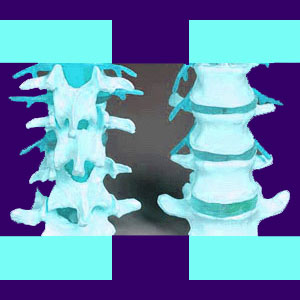
A vertebral stress fracture is a relatively common occurrence in elderly patients. Stress fractures are typically not the result of any particular injury, but are instead usually caused by simple degeneration of the vertebral bodies due to excessive body mass, advanced age and low bone density. Stress fractures, regardless of which type, can be found virtually anywhere in the anatomy, but are most common in the ankles, knees, feet, hips, wrist, hands and spine.
Many stress fractures in the elderly are not painful and many patients do not even know they exist until they are discovered accidentally during imaging for an unrelated condition.
Other types of stress fractures are found in athletes and active people of any age. These types of hairline fractures are typically the results of repetitive stress and overuse, rather than any single injurious event.
This dissertation examines spinal versions of stress fractures in vivid detail.
What is a Vertebral Stress Fracture?
Stress fractures are usually described as bone damage which is caused by compression of the vertebral structure by the very weight of the body and/or the constant repetitive movement of the region. There is often no specific singular event which leads to the fracture and most develop slowly over time. Stress fractures can range from simple cracks to complete vertebral collapse.
Obviously, the more serious the vertebral fracture, the greater the chances of the patient developing pain or other related symptoms. Serious or multiple fractured vertebrae can create a spinal instability condition and might require aggressive and possibly even surgical treatment.
Spinal Stress Fracture Facts
Osteoporosis and low bone density are common causes of stress fractures. Some arthritic and cancerous processes can also contribute to stress fractures in the spine.
Stress fractures are far more common in patients who are overweight since obesity will increase the chances of suffering a symptomatic vertebral fracture exponentially.
Stress fractures are also more common in patients who have lived an active lifestyle or have been involved in an activity which consists of repetitive motion and stress applied to a particular area of the spine.
Activities involving constant impact, like running, are especially linked to stress fractures in various regions of the body.
Vertebral Stress Fracture Management
Most stress fractures are not serious and usually do not require any specialized treatment. However, it is important to monitor patients with a history of spinal fractures, since the condition can escalate to a functionality-threatening degree if it progresses unchecked.
Maintaining a healthy and fit body is key to preventing stress fractures later in life, as is the diversification of activity. Skeletal loading exercises and a nutrient rich diet will both do wonders in preventing low bone density and osteoporosis.
If you have a genetic predisposition to developing bone density issues, make sure to talk to your doctor about what you can do to prevent potentially dangerous fractures as you get older. Additionally, it is crucial to realize the type of activities which may facilitate stress fractures and do everything possible to avoid putting too much focused force on the same area of the spine over and over again.




